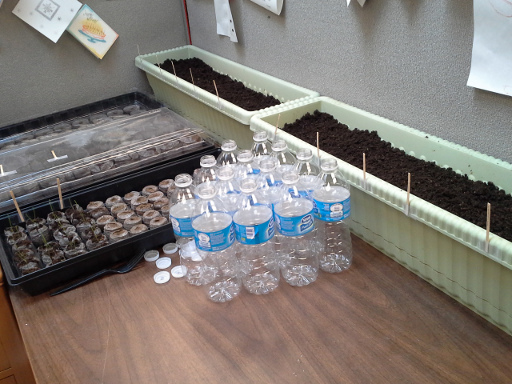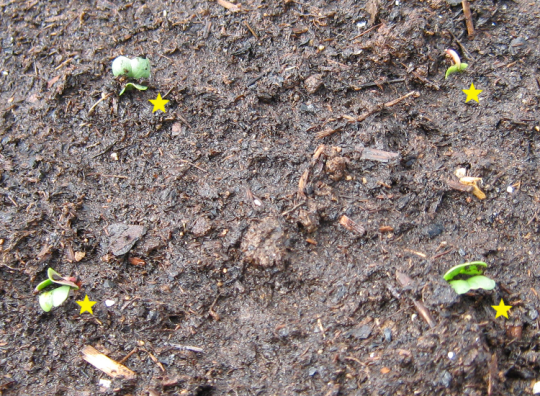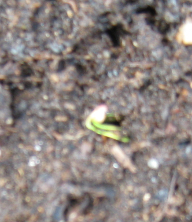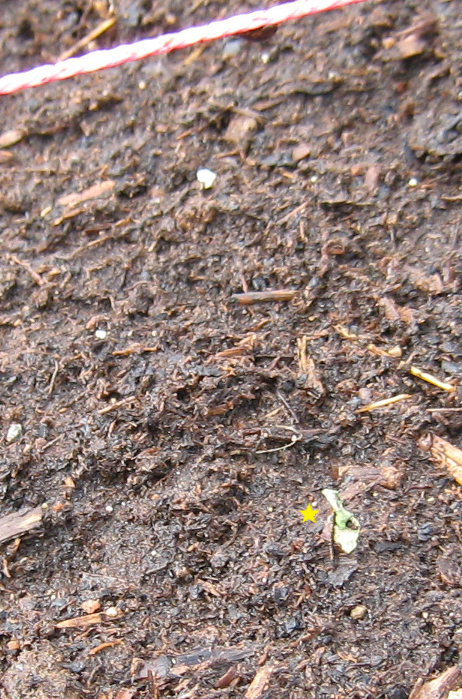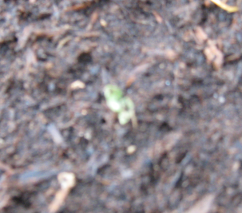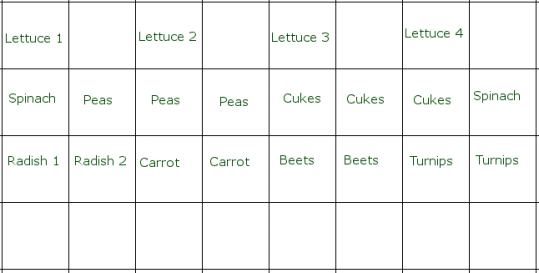Zoom! Like a Rocket
Okay, yes, it’s a terrible pun. Of the seeds I planted a week ago, the arugula was the first to sprout, with several little green faces showing up by yesterday morning. It got close to freezing last night, but never quite got there, which is good, because I did not cover the bed. I wasn’t feeling particularly well yesterday, and decided that if it was only going to take a week to sprout, I’d just replant them if they got nipped. It did rain off and on all night, so I did not have to haul water this morning, so I won’t know how it went last night until I get off work this afternoon.
The cucurbits were planted indoors on Friday, and this morning brought two moldy zucchini peats, two moldy watermelon peats, three cantaloupe sprouts, and the suggestion of sprouts in all the other peats. I’m planning to plant one squash bed in seedlings and one in seeds for each of the cucurbits, then compare the results between the two at the end of the season, to see if I need to bother with starting them early in future years. Cucurbits don’t like to have their roots disturbed, so tend to make poor transplants, but our growing season is so short, and our nights so cool, that careful transplanting might be the only way to get fruit for most varieties.
It’ll be an experiment!
